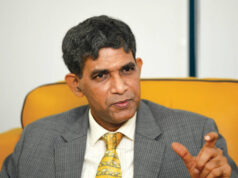Shabbirpur, India – India is witnessing its first-ever election contest between candidates from the lowest Hindu caste for the country’s highest post, the presidency.


Monday’s vote between lawyer-turned-politician Ram Nath Kovind and former diplomat and five-time member of parliament Meira Kumar – a duel described as “Dalit versus Dalit” in the media – is taken as a sign of how India is moving toward a more egalitarian society.
But one need not travel very far from the capital to get a sense of just how emancipated India’s most oppressed really are.
Shabbirpur, a village about 170 kilometres north of New Delhi, in the state of Uttar Pradesh, recently saw caste clashes that killed two people, injured dozens and left nearly 50 homes destroyed.
The violence erupted in May after Jatavs, a Dalit sub-caste, objected to a rally by upper-caste Thakurs to honour Maharana Pratap, a medieval king.
The Jatavs were angry that officials had earlier stopped them from recognising one of their own revered leaders with a bust on the property of a local temple.
Half-burnt houses, collapsed roofs, smashed TV sets and destroyed motorcycles were left in the wake of the clashes that engulfed the Dalit quarter of the Thakur-dominated village.
“This country attained freedom 70 years ago, but the Dalit is not free yet,” says Shivraj, a 61-year-old whose home was damaged.
“Discrimination, exclusion, intimidation and assaults are part of our daily lives. We are not considered Hindu, nor equals, or even human.”
“We hear it’s an all-Dalit contest, but it makes no difference to us,” Shivraj says of the indirect elections in which the ceremonial position of president is chosen by federal and state lawmakers.
“The parties are just trying to appease Dalits with an eye on their votes,” he continues. “Will the new president even have powers to stop atrocities against Dalits?”
India’s caste system initially segregated people according to the profession, then later by bloodline. It is considered the world’s oldest system of social hierarchy, dating back more than 3,000 years. The priestly Brahmin caste was at the top of the ladder while Dalits were at the bottom.
Only a small percentage of India’s 200 million Dalits have posts of power or affluence in the country of 1.3 billion.
Despite decades of affirmative action policies and laws to protect them, a vast majority of Dalits remain, landless labourers, sweepers and scavengers. They face violence and discrimination borne of caste bias, particularly in rural areas.
According to Human Rights Watch, the treatment of Dalits is akin to a “hidden apartheid,” as lower castes endure segregation in housing, schools and access to public services.
In Shabbirpur, Dalits accuse the Bharatiya Janata Party (BJP), which rules at both the state and federal level, of backing the upper-caste Thakurs and failing to act against the culprits.
“The armed men got into our houses in broad daylight and beat us and set fire to our homes,” says Dal Singh amid the rubble of his former residence, complaining that the perpetrators are allowed to “roam free.”
The underlying local tensions have their roots in complex political equations.
Jatavs, a dominant Dalit sub-caste, are opposed to the BJP. Traditionally, the BJP has been an upper-caste party with origins in Hindu nationalism, which many Dalits and Muslims view as a threat to their way of life.
But in recent years, the BJP has worked to broaden its social base. It won the support of Dalit communities to score landslide wins in the 2014 national elections and recent polls in Uttar Pradesh, India’s most populous and politically crucial state.
To consolidate the outreach ahead of the 2019 general elections, the BJP has fielded former governor Ram Nath Kovind, a member of the Dalit-Kori community of Uttar Pradesh. Koris are weavers by trade.
Kovind was nominated as the BJP aims to shore up non-Jatav Dalit votes in the 2019 polls, a strategy, critics slam as divide and rule.
“The BJP thought there is no way to win over Jatavs so let us divide the Dalit community. Mr Kovind will go down in history as a symbol of division between Dalits,” Dalit activist Chandra Bhan Prasad says.
Political analyst Sudha Pai says the BJP is trying to build a strong Hindu coalition for 2019 against the minority Muslims, who usually vote against the party.
Kovind, the frontrunner in the election, would be India’s second Dalit president after KR Narayanan, who held the office from 1997 to 2002.
The opposition Indian National Congress party put forward for president Meira Kumar, a Jatav who is a former diplomat and also the first-ever female speaker of the Lok Sabha, the lower house of parliament.
Over the decades, the caste lines have blurred in metropolitan areas, where Dalits are gaining higher education and holding government and private jobs.
Beyond the election, recent months have seen other signs of Dalit assertion and struggle.
Protests and activist movements – over the flogging of Dalit men and the suicide of a Dalit research scholar alleging persecution by university authorities – have elevated young Dalit leaders.
The Bhim Army, a group of educated Dalit youth, organised popular protests to vent anger at the discrimination. It is led by a young lawyer, Chandrashekhar, who is currently behind bars for links to the violence in and around Shabbirpur.
India’s economic rise has also led to the emergence of Dalit tycoons who have established their own industry chambers with the motto “Fighting Caste with Capital.”
In Shabbirpur, although many Dalits have progressed economically, the bigger battle to overcome social oppression lies ahead.
“As we rise, we see eye to eye with the upper-castes. This is something they cannot tolerate, losing domination,” says Srikanth, a Dalit youth who runs a woodworking business.
-(dpa)










